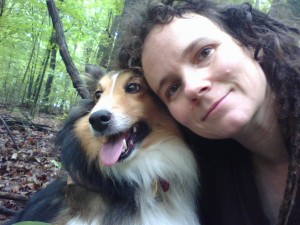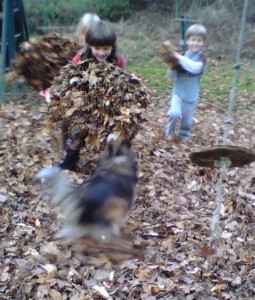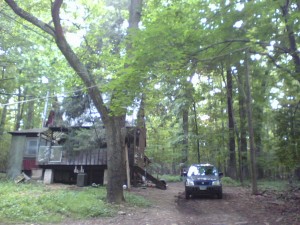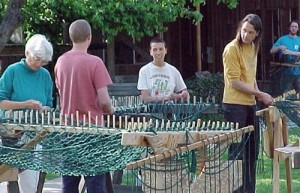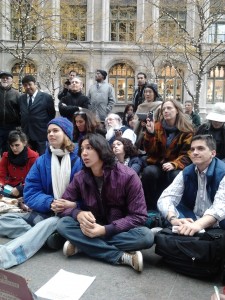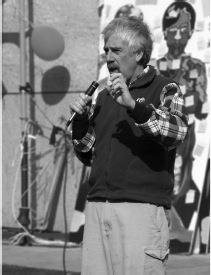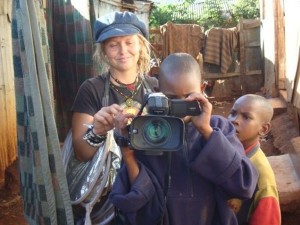Resurfacing in California
C.T.: How long can you tread water?
Wren: For the rest of my life.
Today finds me settled in a log cabin on a mountain, mostly unpacked. Our thirteen year-old dog is lame, trying to decide his attachment to life. C.T. has just received his new computer and mine arrives on Monday. We’ve waded through the mythology of internet service in remote locations and we continue to debate with the DMV and the credit union that our address actually exists. There’s not curbside trash or recycling pickup here. And as we ponder where to hang pictures and whether the local natural remedy will cure C.T.’s “welcome to the woods” poison oak, we are also anxiously waiting for a refund from our moving company, who claimed our worldly goods weighed three-thousand more pounds than they did.
Looks like I’m about ten blog posts behind, eh?
As I consider where to begin, C.T. admonishes me not to look as he folds his clean shirt “gap style,” which I refuse to do. I have always folded mine the way my mother showed me, and the habit is strong. It reminds me of what we tell our consensus students about giving up the habits of voting and competition in favor of consensus culture. It feels awkward at first, and takes longer. Eventually, like dancing or bicycling, it’s in your muscles and it’s even hard to explain to others how to do it. But in the case of shirt folding, I have punted by telling C.T. the “gap style” is corporate and I won’t do it on principle. Old dogs, new tricks.
 So I should probably begin with the dog—more valuable to us than anything we sent on the moving truck, of course. I adopted Tuatha when he was eight weeks old and he’s been my child substitute, lens on living, and my companion through adventures and changes. Being a sheltie (read: intelligent, eager to please and learn) and being with me almost constantly from that young age, he became a very interactive little being. I’ve joked that I should have named him Pinnochio, not because of his long sheltie nose, but because he tries so hard to be a real boy. We developed a language of words, signs and movements that each of us do to communicate often complex ideas to the other. This amazed C.T. when he first became privy to it.
So I should probably begin with the dog—more valuable to us than anything we sent on the moving truck, of course. I adopted Tuatha when he was eight weeks old and he’s been my child substitute, lens on living, and my companion through adventures and changes. Being a sheltie (read: intelligent, eager to please and learn) and being with me almost constantly from that young age, he became a very interactive little being. I’ve joked that I should have named him Pinnochio, not because of his long sheltie nose, but because he tries so hard to be a real boy. We developed a language of words, signs and movements that each of us do to communicate often complex ideas to the other. This amazed C.T. when he first became privy to it.
As a mother to infant Tuatha, I took his education seriously. He went to puppy classes, obedience training, and classes for his Canine Good Citizen certificate. My health prevented me from following with agility classes and doggie acting camp. But we made a little agility course at home and the kids who grew up with him at Heathcote Community were his daily playmates.
I read The Art of Raising a Puppy by the Monks of New Skete and took Tuatha to shopping malls for socialization. Shopping Malls were stimulating to my little extrovert, but it’s the Heathcote playground where Tuatha the jock was forged. I used to supervise him there for hours a day. as Heathcoters and visitors walked by on their way to whatever meeting or chore, they would accept his invitations to play soccer or roll the skateboard so he could kill it. His play days were hours long, with a never ending stream of people joining him. I think this is how he came to view life.
 The Heathcote land was a sheltered place for Tuatha’s sheltered life. He could adventure with the kids over acre after acre of woods. If I was too busy to give him attention, he would slip off unattended, following some path known only to him, resembling some Family Circus cartoon, no doubt, ending up at our neighbors, the Anackers, on the opposite ridge from our home. His path clearly involved trips to the stream, because he would always be wet when he met me at the Anackers’. Although I would have worried the entire time that I was looking for him, he would arrive happy, knowing I would always find him.
The Heathcote land was a sheltered place for Tuatha’s sheltered life. He could adventure with the kids over acre after acre of woods. If I was too busy to give him attention, he would slip off unattended, following some path known only to him, resembling some Family Circus cartoon, no doubt, ending up at our neighbors, the Anackers, on the opposite ridge from our home. His path clearly involved trips to the stream, because he would always be wet when he met me at the Anackers’. Although I would have worried the entire time that I was looking for him, he would arrive happy, knowing I would always find him.
After losing our home at Heathcote, we landed in Staten Island for a while. He tried his disappearing act while our host was distracted, bringing in several boxes. Tuatha was missing in the wilds of NYC for several hours. We combed the blocks, calling. After giving up for the night, we were shocked to hear our host’s boarder hollering to us. Tuatha, disoriented, had recognized her getting off a bus blocks away and followed her home!!!
For the last year or so we’ve been trying to get to the bottom of some health issues. The vets have labeled him an unusual case, which is no surprise and no fun. Tuatha’s chest fills up with fluid and his lungs can’t expand enough. He can’t get a breath. The typical causes ruled out, we have simply controlled it with steroids. He did well for months and seemed to handle in stride the five day, four night car ride from Maryland to California.
Then a week ago he woke up lame, refusing to put weight on one leg and seeming to be in a weakened state. Arthritis seems to be the immediate cause of his sore leg, but Tuatha himself seems to be on the fence about whether he wants to push through this or not. Today is a better day than yesterday.
Yesterday had me calling local vets in my new town and lining up possible home euthanasia. Knowing our options, we will give the medicine a few days.
 Having many pets over my lifetime, dogs, cats, ducks, goats, I’ve been through it. Infirmity and death have always been part of the deal. Some of the losses I’ve experienced have been spiritual and satisfying. Others have left me with regret. I’ve had months to adjust to the reality of losing Tuatha. And I’ll sort out what it means to me in the years to come. But right now my attention is on making him comfortable, following his lead, and encouraging him to give healing a chance.
Having many pets over my lifetime, dogs, cats, ducks, goats, I’ve been through it. Infirmity and death have always been part of the deal. Some of the losses I’ve experienced have been spiritual and satisfying. Others have left me with regret. I’ve had months to adjust to the reality of losing Tuatha. And I’ll sort out what it means to me in the years to come. But right now my attention is on making him comfortable, following his lead, and encouraging him to give healing a chance.
C.T. is setting up his new computer. The pine forest is quiet. The guy called and rescheduled our couch delivery to tomorrow. Leeloo, our cat, is curled up in the middle of Tuatha’s bed. We interpret this as solidarity, not imperialism. Even so, Tuatha has decided to lie down beside his bed, enjoying Leeloo’s company without actually coming into contact that might result in, well, claws…
Subscribe to this blog's RSS feed
Size Matters: What Is It About Redwoods?
 Why have the redwoods of Northern California caught my imagination, and what are they going to do with it?
Why have the redwoods of Northern California caught my imagination, and what are they going to do with it?
It it their sheer size, their long lives, the history and trouble they’ve been through? I can tell I’m in the early stages of this relationship, so answers will follow a winding trail of discovery and more questions.
“The redwoods, once seen, leave a mark or create a vision that stays with you always. No one has ever successfully painted or photographed a redwood tree. The feeling they produce is not transferable. From them comes silence and awe. It’s not only their unbelievable stature, nor the color which seems to shift and vary under your eyes, no, they are not like any trees we know, they are ambassadors from another time.” —John Steinbeck
I’ve lived most of my adult life in the woods. I’ve spent unmeasured frozen time sitting, being with the living forest. It has defined me so much that when I left two years ago, I knew I would be diminished, in a spiritual coma, until I lived again in the woods.
I think it was five or six years ago that I was first brought to the redwoods by my friend Harold. We didn’t have much time for sightseeing on our trip to a conference. But Harold made magical use of the time we had. I got to see Chinatown and Lombard Street in San Francisco, and yes, the primeval, monastery-like redwood forests. I notice as I type this, the repeated urge to give the word redwood a capital R, tall, formal and honored.
On that visit, I said that I could imagine living in Northern California, but I couldn’t imagine leaving Heathcote Community in Maryland. It wasn’t just the landscape, exotic to me, or the ocean. I felt I was swimming in a generally more tolerant and left-bent culture. Having lived in Kentucky and rural Maryland, I felt a relaxing of some emotional muscle in that environment. I hadn’t known that muscle existed, or how hard it worked all the time.
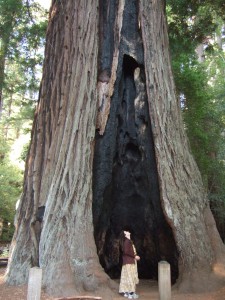 Years later, I visited again with my partner, C.T. Butler, as part of our Direct Democracy Tour, teaching consensus to Occupy groups. Occupy Chico flew us in. When we taught workshops at Occupy Wall Street, young activists often accompanied us to dinner, hoping we would treat them. In Chico, the more mature, experienced activists elbowed to get turns taking us out for meals, taxiing us around, holding fundraisers for our tour and presenting us with gift baskets. I could get used to this, I said. I need to live here…
Years later, I visited again with my partner, C.T. Butler, as part of our Direct Democracy Tour, teaching consensus to Occupy groups. Occupy Chico flew us in. When we taught workshops at Occupy Wall Street, young activists often accompanied us to dinner, hoping we would treat them. In Chico, the more mature, experienced activists elbowed to get turns taking us out for meals, taxiing us around, holding fundraisers for our tour and presenting us with gift baskets. I could get used to this, I said. I need to live here…
And yet it seemed like a someday dream. The last year has been a slow motion, molasses-pour of looking for jobs, starting and stopping ones that sucked at our comatose souls, and caring for C.T.’s dying mom. We parked our house, our Fleetwood Bounder named Serenity, at a succession of friends’ houses until we were offered a friend’s rental house in a DC suburb.
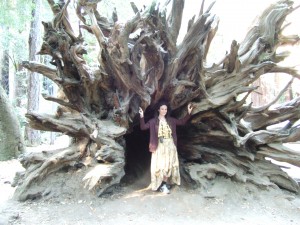 The yard has a steep, wooded slope, visited daily by deer. The forest will have me.
The yard has a steep, wooded slope, visited daily by deer. The forest will have me.
After yet another job offer disappointment, I sent C.T. a batch of craigslist postings from San Francisco. I was aware of the Salmon Creek Community for sale north of there, a property in a redwood forest that includes eight cabins and no zoning woes. So why not ask the universe for what I want?
C.T. responded to two of the listings before questioning the point, and reiterating that he should stop looking for a job. Ha. Not only did he get one of the jobs on the same day that his mother finally passed away, but he loves it and is finding it so much flowier a fit than those false starts on the East Coast.
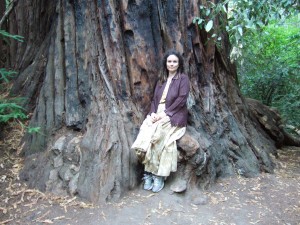 It’s as if the universe was waiting for us to say, California!
It’s as if the universe was waiting for us to say, California!
Will our little collective be successful in securing Salmon Creek Farm and making it into a thriving Intentional Community once again? I hope so. We’re working with our very adult relationships to intention and attachment, open to whatever. But whatever happens there, I’m planting myself in California.
In the Zone: Intentional Communities and Local Zoning Regulations
A member of my Facebook group, TRIBE: Choosing Intentional Community recently posted a very important question:
So, if someday I wanted to start thinking about buying land for an intentional community what kind of zoning should I be looking for, and what states would be good to look at? I’ve always wanted to try something like that but I don’t know where to start.
If you’ve been following my posts here or on Facebook, you may know I lost my home at Heathcote Community a couple of years ago, in part, due to zoning issues. Northern Baltimore County, where Heathcote has been in operation since 1965, Has evolved into one of the most regulated parts of the country.
Land Is Power
In my thoughts about IC’s and zoning, I make the assumption that community land is either held equally in common by all current members of the group, or held in some form of land trust.
If you’ve visited www.ic.org’s listing of Intentional Communities, you know that a lot of communities never get past the “forming” stage. As a matter of fact, about 90% of forming communities fail. Power imbalances like founders retaining ownership of the land are significant contributors to IC failures. Don’t make this mistake.
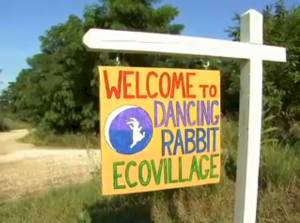
Missouri, home to Dancing Rabbit, East Wind, Sandhill, Red Earth, and the Possibility Alliance, currently has little zoning in rural areas.
Unregulated regions
Many parts of the country—remote sections of Kentucky, Tennessee, West Virginia, Arkansas and Missouri, of note, have little or seemingly no zoning. (Spiralwimmin Community in Kentucky is a case in point, and is currently for sale.) Often bare bones zoning requires a well and septic to be in place, whether you use them or not. And to make these areas even more attractive, land is magically cheap.
There are reasons. Available land is often mountainous and hard to farm, or blighted by logging, mining or fracking. Also, the surrounding communities in these cheap land/no zoning regions have few job opportunities. When I visited the thriving community of Dancing Rabbit in Missouri, I was clear that, in order to live there, I’d have to have some self-employment, such as software consulting, or live on savings.
I’m not familiar with other sparsely populated regions such as in Idaho, the Dakotas, and the Southwest. It’s possible that areas there haven’t been regulated yet.
I suspect that these regions won’t stay low or no-zoning forever. Like Heathcote in 1965, your perfect commune home in the Ozarks might see zoning put in place over time. And then you still have the problem, as Heathcote experienced a couple of years ago.
A challenge you may have in the meantime is that you may be surrounded by neighbors who also sought out affordable, zoning-free land, but for very different values than the ones you live by.
Writing Our Own Zoning Laws
Northern California is an area that has my attention. I’ve learned that many hippie communes formed as people migrated to Mendocino County from Haight-Asbury. As with any rural area the surrounding neighbors included supporters and people who took issue with the hippie shacks popping up without regard to codes.
It appears that these California communards, having some strength in numbers, became part of local governments, served on zoning boards, and by the 1970’s or 80’s they’d won a special zoning status, “Code K,” that allows DIY (owner built) structures to be built on a single property, to be subject to fewer inspections and meet some basic codes while being exempted from others. A great compromise!
As a person seeking to form a community myself, I am traveling soon to visit such a former community that is now for sale. It includes several of these Code K cabins, and was one of the great Northern California communes of the 60’s and 70’s.
Conforming in Our Community Designs
When the founders of Earthaven Ecovillage first designed their community, they took pains to create structures that would conform with local zoning laws. Now they’ve been informed that their legal
configuration doesn’t conform. They’ve worked with local officials and are embarking on a dramatic (read: expensive) restructuring. It would be great to have an Earthaven member write a post giving us more details! I’ll follow up on that.
Several egalitarian, or income-sharing communities are helped by their 501D status, which effectively means the IRS considers them monasteries. (Twin Oaks in Virginia is an example.) That helps with the question of unrelated adults living together, which was part of the equation at Heathcote, but any local zoning laws still have to allow monasteries.
Cohousing can be an attractive model to start a community that preserves much of the privacy Americans are used to while also fitting existing zoning regulations. Although I have many friends in cohousing and we consult regularly with cohousing groups, I don’t recommend the cohousing model. Of course, it’s easy to notice that cohousing is only an option for
communitarians who can afford to build. But another problem is embedded in one of cohousing’s zoning advantages.
A cohousing community is zoned as a development, a residential neighborhood. Zoning officials don’t concern themselves with the cooperative gardens or common buildings because each family unit has its own housing unit. That’s what they understand. But, unlike a 501D community, where members can be required to buy into the mission of the group, cohousing is subject to Fair Housing laws. When founding members die, divorce, move across the country for a job, etc., and units start to be sold, the sellers can’t legally require that the new buyers agree with the community’s values, or participate in community in any way. They can strongly request it, but they can’t require it. Across the US, as cohousing communities mature and ownership starts to change hands, members find themselves living with uncooperative new neighbors. I know of at least on cohousing development where the lack of common ground has spiraled into violence and restraining orders.
Taking up Our Space
My ideal vision is that we witness for ourselves to zoning authorities, take up our space at the table and win code variations that allow for our various forms of Intentional Community. But for tiny fledgling IC’s around the country, that’s a David and Goliath fight, one that feels like too much. Maybe someday we’ll organize as a movement and use collectivity to bring about desired zoning changes.
In the meantime, I’ve learned the hard way not to ignore these issues. When I first moved to Heathcote, members were already discussing concerns about legality and how we could evolve, from the DIY hippie shacks we’d inherited from previous incarnations of Heathcote, to a community safe from the threat that one complaint could leave members homeless. We lived under that question as we updated and made improvements, budgets permitting. Over the seventeen years I lived there, I’m amazed at how much we achieved. But some codes we couldn’t address with a hammer. And in the end, I had to leave my happy little hut in the woods.
To recap:
- Don’t privately own the land!!!
- Consider the egalitarian/income-sharing/501D thing.
- If you’re safe enough, advocate for zoning allowances in your area.
- Consider code K land in California.
- Don’t just leap and hope for the best, really!
Fiopa Community: A Call for Funding and New Members
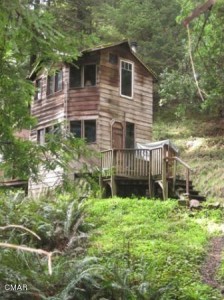 Fiopa Consensus Collective is moving to Northern California!!! If you’ve been following our work and lives during the last couple of years, you know that our goal has been to establish an Intentional Community that is also an institute for the study of consensus and group dynamics. We’re pulling the strings together to make that happen!
Fiopa Consensus Collective is moving to Northern California!!! If you’ve been following our work and lives during the last couple of years, you know that our goal has been to establish an Intentional Community that is also an institute for the study of consensus and group dynamics. We’re pulling the strings together to make that happen!
C.T. is moving to the Bay Area for a job, with Wren following in a couple of months. In the meantime, we’re pursuing rural properties suitable for our community and educational plans.
Backing Up: Who We Are
Fiopa Consensus Collective is currently Food Not Bombs cofounder and consensus author C.T. Lawrence Butler and Wren Tuatha, late of Heathcote Community.  We are considering applications for more Fiopa members now. All members will be practitioners and teachers of Value-Based Consensus, from C.T.’s books, On Conflict and Consensus and Consensus for Cities. FCC is an income-sharing collective committed to sustainability, social and economic justice, non-violence, and deep community relationships. “Fiopa” is a Choctaw word meaning, “to breathe,” representing the pause and breathing that’s important to our communication work.
We are considering applications for more Fiopa members now. All members will be practitioners and teachers of Value-Based Consensus, from C.T.’s books, On Conflict and Consensus and Consensus for Cities. FCC is an income-sharing collective committed to sustainability, social and economic justice, non-violence, and deep community relationships. “Fiopa” is a Choctaw word meaning, “to breathe,” representing the pause and breathing that’s important to our communication work.
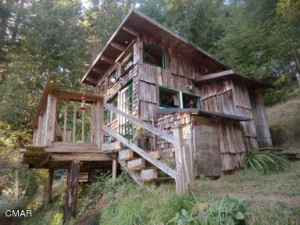 Moving Forward: One Property in Our Sights
Moving Forward: One Property in Our Sights
We are open to our institute being in many parts of the U.S. We have current and past workshop and consulting clients in every region, especially on both coasts. But while on our Direct Democracy Tour, teaching workshops in various Occupy encampments, we felt a special connection to Northern California.
With a long history of Intentional Communities stretching back to the 1960’s, California even has special zoning, called “code K,” which legalizes the simple hippie shacks we love so much!
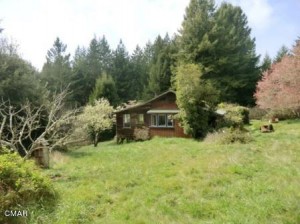 One specific property is about 30 acres, with eight code K structures. It includes an orchard, redwood forest and is on the south facing side of the mountain, great for solar and gardening. It includes a creek that empties into the ocean less than two miles away. The pictures in this post are of that property.
One specific property is about 30 acres, with eight code K structures. It includes an orchard, redwood forest and is on the south facing side of the mountain, great for solar and gardening. It includes a creek that empties into the ocean less than two miles away. The pictures in this post are of that property.
Our Call for Funding
We ask for your partnership to help create our institute, where we can go deep with students, letting activists and communitarians experience consensus culture, spreading practices that truly interrupt privilege and oppression in groups, letting deep, true democracy emerge.
 We’re launching a capital campaign to raise funds for a down payment for this or similar suitable property! We have made an initial offer and are negotiating a deal. We’re raising about $1-200,000 which will be applied to the right property, this or another, within the next few months. We’ve confirmed about $20,000 pledged so far, with more in the works. So friends, family, supporters, students, and people who wish we’d leave the East Coast, please consider those contributions, large and small!
We’re launching a capital campaign to raise funds for a down payment for this or similar suitable property! We have made an initial offer and are negotiating a deal. We’re raising about $1-200,000 which will be applied to the right property, this or another, within the next few months. We’ve confirmed about $20,000 pledged so far, with more in the works. So friends, family, supporters, students, and people who wish we’d leave the East Coast, please consider those contributions, large and small!
Some people in our circles can only afford $20. Others know that $200 or $2000 will not be missed. There are people who can be major donors with $20,000 or more. You know who you are in this crowd. Now is an exciting moment of truth for Fiopa Collective!
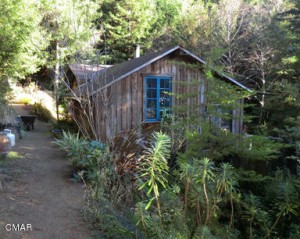 To donate via Paypal: send gifts to ctbutler@together.net
To donate via Paypal: send gifts to ctbutler@together.net- To donate via check, without a tax deduction: Make check out to “C.T. LAWRENCE BUTLER” and mail to same, at—7304 Carroll Ave #136, Takoma Park, MD 20912
- To donate with a tax deduction, visit us at our fiscal sponsor’s site: FUSION PARTNERSHIPS.
Our Call for New Members
Do you desire more connection with people and the planet? Do you want to share resources, work and land with like minded individuals? Do you believe that deep communication, listening, and transparency are keys to solving conflicts, experiencing equality, and making decisions together? Do you want to help alternative activist groups, Intentional Communities, spiritual communities, and others achieve their goals of healing the Earth and bringing justice? So do we!
Our mission is to deepen people’s understanding of what consensus is and what it asks of us. Moving from power-based to value-based processes, we teach structures of group dynamics that interrupt behaviors that perpetuate privilege and oppression in the very alternative groups which formed to end such injustice. We help them discover a real egalitarian path. Our plan is for several members to earn shared income through consulting, workshops, immersions, facilitation, and mediation.
Our transition looks like this: Fiopa Consensus Collective is currently housed in Temple Hills, Maryland, a southern suburb of Washington, DC. Wren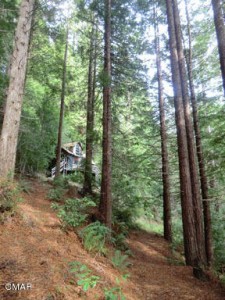 will remain here at least through January, 2014, possibly even until spring. Then Wren will join C.T. in California. People in the membership process are welcome to visit the Temple Hills house but we won’t start provisional residencies until we settle on the West Coast.
will remain here at least through January, 2014, possibly even until spring. Then Wren will join C.T. in California. People in the membership process are welcome to visit the Temple Hills house but we won’t start provisional residencies until we settle on the West Coast.
Community is a very intimate relationship, requiring transparency and a shrinking of the privacy bubble many are used to. Since it will take time to get to know each other and learn if our missions and values are matched well, our membership process is a slow one. This is a simple overview of the stages prior to full membership:
- correspondence, phone calls
- visit the community, attend community events
- submit a membership application
- stay for an extended visit (3-4 weeks, in California)
- move in as a provisional member (1 year, in California)
To ask questions or to begin the process, contact us at fiopa@consensus.net!
And thus begins our new adventure, in which we can finally create a safe, effective, educational consensus experience to all who seek it!
—WT
Curl Murder: “How Could You Do That to Your Hair?”


 My mother’s desire to be an accepting individual doesn’t mean she’s going to hold her tongue when she has an opinion. In fact, I guess we’re a lot alike that way.
My mother’s desire to be an accepting individual doesn’t mean she’s going to hold her tongue when she has an opinion. In fact, I guess we’re a lot alike that way.
 Even so, I found it ironic that, in the fifteen or more years that I’ve been carrying dreadlocks, she’s often commented on the many nonlocked ways she likes my hair, and how those more socially acceptable ways show off my abundant curls. I find this ironic because she spent my entire childhood trying to comb out said curls, cut them into a bob, or at least train them into little wetted spirals held overnight with bobbie pins, making different curls than the ones that naturally sprout from my scalp.
Even so, I found it ironic that, in the fifteen or more years that I’ve been carrying dreadlocks, she’s often commented on the many nonlocked ways she likes my hair, and how those more socially acceptable ways show off my abundant curls. I find this ironic because she spent my entire childhood trying to comb out said curls, cut them into a bob, or at least train them into little wetted spirals held overnight with bobbie pins, making different curls than the ones that naturally sprout from my scalp.
 I got off easy in the girl-child-of-the-seventies-hair-torture department. My older sister had to sleep in juice can curlers. They weren’t just the size of juice cans, they were actual juice cans with her long, straight hair wrapped around them. My younger sister, also cursed with straight hair, but tender-headed, was subjected to the curling iron.
I got off easy in the girl-child-of-the-seventies-hair-torture department. My older sister had to sleep in juice can curlers. They weren’t just the size of juice cans, they were actual juice cans with her long, straight hair wrapped around them. My younger sister, also cursed with straight hair, but tender-headed, was subjected to the curling iron.
My straight-haired mom went for perms every three months. The perm process took hours. The chemical smell  burned our eyes and left actual burns on the scalp as it burned her hair into whatever curl she wanted. Sometimes she’d dye the gray away, or go for streaks or highlights.
burned our eyes and left actual burns on the scalp as it burned her hair into whatever curl she wanted. Sometimes she’d dye the gray away, or go for streaks or highlights.
Given what mainstream folks do to their hair regularly, I’m perplexed at the occasional weird reaction to a gentle hair practice that involves no chemicals and is rooted in community, familial interaction and connection to nature. But I realize we’re all coming from culture and what’s familiar.
 The other undercurrent of comments from my White friends and family is some good old fashioned curl coveting. If I’m not going to use them, someone else should have them, right?
The other undercurrent of comments from my White friends and family is some good old fashioned curl coveting. If I’m not going to use them, someone else should have them, right?
I’m pensive about the zenophobia that seems to frame the rare brave comment. I was in an elevator in a library in Lexington, Kentucky. A woman asked me about my locks. “They’re different,” She concluded. “To you,” I answered. She thought for a moment. “No, they’re different,” she  repeated. Her world was the entire world.
repeated. Her world was the entire world.
Although such comments are rare, some folks at the York Fair in Pennsylvania really laid it on thick. “You don’t belong here. What country are you from?” My home of nearly twenty years was just twenty minutes from where I was standing, in the country where I’ve lived every day of my life, except for that summer in Spain when I was fifteen and that day my family drove into Canada while visiting Michigan.
 As a matter of fact, a few miles from the York Fair at Spoutwood Farm, I used to attend the annual Faerie Festival. That crowd, sometimes reaching ten thousand in a weekend, was the place where I was least different, surrounded by a high percentage of dreadlocked hippie folk.
As a matter of fact, a few miles from the York Fair at Spoutwood Farm, I used to attend the annual Faerie Festival. That crowd, sometimes reaching ten thousand in a weekend, was the place where I was least different, surrounded by a high percentage of dreadlocked hippie folk.
After the first few years of carrying locks, I was long past concerning myself with the store security guard who followed me around or the eyes that might do  double takes when I entered a room. I was busy living my life. If people did have stereotypes, as soon as I would speak, it was clear that I was not stoned and that I had come to conduct serious business. I was never aware of my hair closing any doors that I wanted to enter.
double takes when I entered a room. I was busy living my life. If people did have stereotypes, as soon as I would speak, it was clear that I was not stoned and that I had come to conduct serious business. I was never aware of my hair closing any doors that I wanted to enter.
But when I began spending time with my partner, C.T., he had an interesting vantage point, walking into a restaurant after me, or watching me in a parking lot. He would see every double take that I was missing because I  was just being myself, and didn’t care. He made a game out of projecting what each onlooker was thinking. It reminded me that with every point of contact, I was adjusting each person’s normal/different continuum.
was just being myself, and didn’t care. He made a game out of projecting what each onlooker was thinking. It reminded me that with every point of contact, I was adjusting each person’s normal/different continuum.
I like the tradition of working (maintaining) locks as a familial or communal practice. When I started my first set, I threw a party and asked my Heathcote Community mates to start them. I got some feedback that this felt odd or self absorbed. So I established the next set  myself. I did teach C.T. to maintain my locks and when they grew so long and heavy that I was having neck pain, he ritually cut them for me, symbolizing also, the end of our time with Occupy Wall Street. Now he’s helping me start a new set.
myself. I did teach C.T. to maintain my locks and when they grew so long and heavy that I was having neck pain, he ritually cut them for me, symbolizing also, the end of our time with Occupy Wall Street. Now he’s helping me start a new set.
This is the set of locks I’ll carry as I go gray, as C.T. and I go deeper in our relationship and our teaching of consensus. What new places and people will add their energy to these locks? Our dog will grow old and die. Will we  make it to California? Where will we put down roots and establish our consensus institute?
make it to California? Where will we put down roots and establish our consensus institute?
In this time of new beginnings, it is time to begin new dreadlocks.
—WT
Fiopa Consensus Collective: The Process Doctors
 (From Wren: Here I’m transforming our services brochure into a blog post, to make it easier to pass around the web. Please contact us for a PDF at fiopa@consensus.net.)
(From Wren: Here I’m transforming our services brochure into a blog post, to make it easier to pass around the web. Please contact us for a PDF at fiopa@consensus.net.)
Is communication breaking down in your community? Is there widespread frustration and anger because of strong personalities or hidden agendas? Would you like members to have better meeting and listening skills? Do you have important decisions to make but no clear structure or process to know you’re making the best decisions for the whole group? Schedule a conference call with the master facilitators from Fiopa Collective to see if we can help.
We offer the following services:
Consulting
Groups come together around big ideas. It might be an innovative green building design, creating a Permaculture project, an action for social, economic or environmental justice, or living in community. It’s the vision that draws us together. But we often undervalue the interpersonal dynamics of the group, assuming everyone’s good intentions will make magic. But along with some magic, we bring some old habits into our intended new world. Similarly, we bring our familiar leadership habits and meeting structures with us. But the leadership styles and social architecture that got us into our current messes will not get us out of them. It can be unnerving to set aside old tools when you don’t know how the new ones will feel in your hands. We can get you through it.
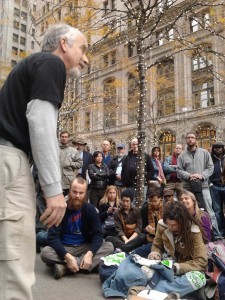 With 45 years of community and consulting experience between us, the Process Doctors have seen what works and what doesn’t in intentional community. We are resourceful problem solvers and guides in the shaping of your organizational structure and community culture. We can consult in person and via conference call or Skype.
With 45 years of community and consulting experience between us, the Process Doctors have seen what works and what doesn’t in intentional community. We are resourceful problem solvers and guides in the shaping of your organizational structure and community culture. We can consult in person and via conference call or Skype.
Facilitation
Would you prefer an outside facilitator for an important meeting or retreat? We can serve your group’s process so you can focus on content. Rather than shepherding your group to any particular outcome, we focus on creating safe space and keeping the group’s agenda contract. We strive to insure all voices are heard.
Mediation
You might not appreciate it when you’re in one, but we think of conflict as a good thing. It’s how we find out what’s really going on, what people really need or truly believe. It’s core to the consensus process. Even so, it isn’t fun and it’s not where we want to live. If parties to a conflict in your group can’t resolve things themselves, our mediation can help.
To introduce the structures and culture of Value-Based Consensus, we offer our weekend workshop, Consensus: Body and Soul. To learn the practice of Value-Based Consensus, we suggest our Social Technology Toolbox Camp, a ten-day immersion. Currently we’re developing a three-month immersion residential program integrating consensus training, facilitation, mediation, affinity-group structure, and process consulting.
Workshops On:
Identifying, Defining & Using Values
Are your group’s decisions based on your commonly held values? Have you articulated them? What does each value, such as “honesty,” mean to each member? Our weekend workshop is designed to get your common values to be alive in the group, with each decision rooted in what’s most important to you!
Agenda Planning & Facilitation
You may think you don’t need help in this very unsexy area. But who controls the agenda controls the meeting. We teach that egalitarianism, in part, means equal access to the agenda. Let us show you how to democratize your planning and build in accountability here.
Value-Based Consensus (VBC)
As C.T. Butler is the author of On Conflict and Consensus, most of our requests are for weekend workshops on how to do consensus decisionmaking. We offer a two-part VBC workshop:
VBC Part I
Consensus: Body and Soul (CBS) outlines the structure and paradigm shifts (culture change) of consensus and clarifies how consensus is different from voting in structure and values.
VBC Part II
Consensus in Action (CIA) is our follow-up to CBS; a practical lab. We will practice using VBC, facilitating, agenda planning, and identify the many changes in meeting culture needed to effectively use VBC.
Social Technology Toolbox Camp
This ten-day intensive “summer camp” is our core training. It includes the CBS & CIA workshops, and workshops on social technology tools such as: ZEGG Forum, triads, JoHari Window, affinity groups, spiral dynamics, enneagram, Non-Violent Communication (NVC), etc.
C.T. Lawrence Butler is co-founder of Food Not Bombs and author of On Conflict and Consensus, Food Not Bombs: How to Feed the Hungry and Build Community, and Consensus for Cities. As an activist, he has participated in over 500 non-violent direct actions. The meetings to organize actions and to form the first Food Not Bombs collective inspired C.T. to teach consensus and to write On Conflict and Consensus, now with over 10,000 copies sold. He is a master facilitator; featured in the Whole Earth Catalog.
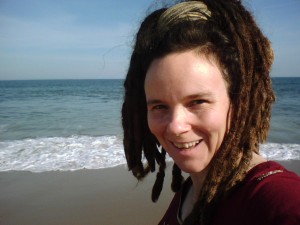 Wren Tuatha is an experiential educator who lived at Heathcote Com-munity in Maryland for 17 years. She founded and facilitated Heathcote Open Classroom and taught social technologies at Heathcote’s conference center. Specializing in facilitating “elevator down” modalities, Wren studied ZEGG Forum with American & German trainers. Her facilitation draws on Heart of Now, Theater of the Oppressed, World Work and other sources to help individuals and groups integrate head, heart and gut. Wren is also an award winning poet, screenwriter and blogger. She is founder and administrator of: TRIBE: Choosing Intentional Community.
Wren Tuatha is an experiential educator who lived at Heathcote Com-munity in Maryland for 17 years. She founded and facilitated Heathcote Open Classroom and taught social technologies at Heathcote’s conference center. Specializing in facilitating “elevator down” modalities, Wren studied ZEGG Forum with American & German trainers. Her facilitation draws on Heart of Now, Theater of the Oppressed, World Work and other sources to help individuals and groups integrate head, heart and gut. Wren is also an award winning poet, screenwriter and blogger. She is founder and administrator of: TRIBE: Choosing Intentional Community.
Visit us on Facebook:
TRIBE: Choosing Intentional Community (group)
Fiopa Consensus Collective (page)
On Conflict and Consensus (page)
Hippie Chick Diaries (page)
Fiopa Consensus Collective
410.458.2310
301.586.2560
Allen Cohen Poem:
35TH REUNION OF TABLE MOUNTAIN RANCH COMMUNE
I didn’t think I’d go to the communal reunion
with all my illnesses pouncing on my life at once.
and this insomnia ruminating through the depths of night.
I lived there in Albion in a dome and a tepee
beneath the redwoods from 1968 to 75
with 15 or 20 other communards and our children.
Now we are all aging – hair gray, wrinkled
our souls leaning closer to death.
The woman still with the beauty
of reflected, remembered youth.
The men like back country geezers,
wizened with worn bodies and much warmer hearts.
Together they recall the grand experiment
we threw our youth into.
A tepee is set up,
tents like mushrooms
bulging from the meadows.
Pizza is being baked in outdoor
wood fire clay oven.
Laurie speaks of her battles with self-doubt
as she masters hatha yoga
trying to emulate the most difficult postures.
She still, as always, drives herself toward god.
Marshall relates his trip to Egypt
taking acid on sacred mountain near Luxor
and on a boat on the Nile imaging
the cascade of time and cultures
backward and forward and eternal.
Bill fighting the lumber companies
forest by forest gaining more knowledge
with each loss or victory.
Now trying to save thousands of acres
along Salmon Creek forming a group
to buy and maintain and conserve it,
and organizing to defeat a corporation
that wanted to suck and bag the water
in the Albion River to sell to San Diego.
Walter writing a 400 page poem rant
against American corporate dominance
and esoteric books on Ancient Egypt
pre-dynastic and pre-ice age
when Aliens from Sirius colonized
and mated with earthlings – all revealed
in the mythologies that survive.
Vennie who never gave up
on making the land into
a true cooperative.
She is retired and still
tall and beautiful with
the grace of a young Madrone.
Pamela her hair gray and crew cut
her health recovering from
mysterious illness, still
queenly and arrogant
with an intelligence that
cracks the atom of self doubt.
All of us learning to let go of time
and the fear of mortality
as the generations surrounds the future
making their own mark on the everlasting earth.
The children, now young men and women
have become independent and self made
with talents and skills and careers
still living close to the land and forests
with families and their own children.
My insomnia keeps me awake
outlasting the coastal fog bank
moving back out to the Pacific
revealing a sky full of stars.
The Catholic Church taught
that stars were the light of heaven
seeping through holes in a cover
thrown over a fallen planet.
The stars are revealed to me
flinging me into the grand cosmos,
an opera of births and deaths
ascendancies and descents.
I see four meteors flashing
like fireworks through the stars
and I make a wish that
I live to see many more.
This is the goal of all
the gallant insomniacs -
to be alone at four
in the morning
in the cradle of night
witnessing the entire universe
unfold and embrace the earth.
The shadowy outlines
of the giant redwoods
bolting upwards block
parts of the starry night,
eminences of the earth,
and the silence surrounds me.
© Allen Cohen
Goodbye for a Thursday: Dancing Shoes
 Dancing shoes, on the wall
Dancing shoes, on the wall
Above your bedside
Saw it all as
We performed our pirouette
I have owned these white leather folk dancing shoes for twenty-five years. I haven’t worn them for twenty three years. I bought them at Christmas Country Dance School in Berea, Kentucky. I was there with my then partner, Patti. She was a pro; I was new to folk dance and lacking proper footwear.
Fleshes fused as
The flicker of the candles
Threw upon the wall
A single silhouette
Tu es dan ma coeur et dans ma t?
Having made several of her own dance costumes, Patti lovingly crafted a carrying bag for my shoes. I was to never wear them outside, but change once I arrived at a dance. The bag is green, my favorite color. These shoes have lived in this bag for twenty-five years, always existing either with my other shoes or in the special box that came to house the other dance costuming Patti made for me—my leg straps dripping in Morris bells, sewn with ribbons colors representing the four elements, if I recall. She sewed matching ribbons on the sailor cap that had been my dad’s. I was quite a gender-bending Morris dancer.
Dancing shoes, we have loved
On distant beaches
Where the winter
Never reaches, there we fell
In those dancing days I wore these white leather shoes at contra dance, English country dance, Scottish, but never Morris; That’s way too butch for soft white slippers. What did I wear for Morris?
Dying swan, on the dawn
You danced before me
Though your eyes were dark
And stormy, I stood still
Qui peut dire le faux et le r
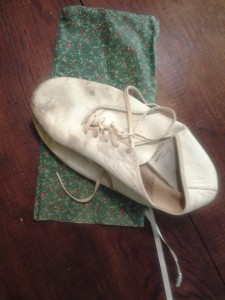 In the impromptu store at Christmas School there weren’t many shoes to choose from. I didn’t want white, always looks dirty. I didn’t want leather. We were trying to go completely vegetarian. And they didn’t have my size. These are one size too large. But I wanted dancing shoes more than I needed them to be perfect. So they became mine.
In the impromptu store at Christmas School there weren’t many shoes to choose from. I didn’t want white, always looks dirty. I didn’t want leather. We were trying to go completely vegetarian. And they didn’t have my size. These are one size too large. But I wanted dancing shoes more than I needed them to be perfect. So they became mine.
Dancing shoes
Though the distances divide us
There’s a paradise inside us
We can’t lose
But they were stepchild shoes, even then. When Patti and I were married I bought peach colored ballet shoes to match my peach colored dress. Those shoes were my size. And yet, for twenty-five years, this green drawstring bag and the white leather dance shoes within have followed me from house to hut to here. They have meant something to me. Identity, memory, embodiment. Now, I keep the meaning and free these shoes to belong to another dancer.
Me and you
Dance a ‘Pas de deux’
Forever and I pray you never
Shed your dancing shoes
—lyrics by Dan Fogelberg
Nairobi Activist Misses Westgate Mall Violence by One Hour
With the horror of the attack on people at Nairobi, Kenya’s Westgate Mall on Saturday, I was relieved to learn that Food Not Bombs activist and IndyMedia photographer Douglas Rori was not hurt. But when we called him to check on his safety, we learned just how close he came to being in the maylay. (More story below.)
It turns out he was at Westgate Mall an hour before the shooting began, completing an errand my partner C.T. had sent him on! C.T. Butler, cofounder of the original Food Not Bombs collective, met Doug Rori at the IndyMedia Convergence in 2007. They’ve enjoyed a long distance, father-son relationship since then, with Doug initiating FNB work in Kenya, and C.T. sending donations from the United States.
Late Friday afternoon in Washington, DC, C.T. jumped up from a nap, remembering that he needed to rush to wire money needed that day for the transport cost of food for a group of kids.
I’ve written before about Doug’s inventive program to feed kids living in Nairobi slums and AIDS orphans who live on the streets. If he held a public feeding as Food Not Bombs chapters in America do, he would likely have a food riot on his hands, the need is so great. The forceful would take the food for themselves, subjecting Doug and other FNB volunteers to violence and leaving nothing for the children.
So instead of a public show, Doug advertises a free photojournalism class for kids. He conducts it in an enclosed courtyard or other location out of sight. The kids have a great time building skills and learning how to tell their stories. When it’s done, everyone eats a great meal.
Doug has established a couple of different locations for his enclosed workshops/feedings. And unlike American FNB members who can simply drive their food to the site of a feed, Doug has no car and has to be clandestine. He often has to hire taxis, at great expense, to deliver the hot food to the sites.
The donation C.T. had wired was to pay for the taxi. With C.T.’s call to alert him, Doug went to the Westgate Mall to pick up the wired money immediately. An hour after he left, the shooting started.
As a photojournalist for IndyMedia, Doug was interested to get as close as he safely could. The photos at the top are what he was able to send us. Stay safe, Doug! Send more when you can!
If you would like to donate to Doug’s project, visit:
http://awellfedworld.org/kenya
How I Know There Are Sixty Drawers in My House
 Drawers really add up. You look at a dresser and it has four drawers. You don’t think to do a room to room survey to find out how dressers and filing cabinets and desks and sideboards collaborate with the kitchen to really run up your drawer tally. You don’t go room to room, because, why would you?
Drawers really add up. You look at a dresser and it has four drawers. You don’t think to do a room to room survey to find out how dressers and filing cabinets and desks and sideboards collaborate with the kitchen to really run up your drawer tally. You don’t go room to room, because, why would you?
Neither did I.
Then came today, when my partner and I had been out running errands with our dog, who loves being “on the away team.” When we got to our door and it opened without a key, we could plainly see we’d been burglarized.
 The predominant visual was that every drawer was pulled out, some tossed on the floor, contents scattered.
The predominant visual was that every drawer was pulled out, some tossed on the floor, contents scattered.
Yes, we called 911 and followed instructions to leave the house and sit in our locked car until the police came. Three officers in three separate patrol cars arrived and blocked off our cul-de-sac. They circled the outside, then surveyed inside, guns drawn. They gave us the all clear and had us survey for missing items. We tried and tried, but we couldn’t come up with a single item that was missing.
Our possessions were so lame the police didn’t even give the complimentary lecture on how to make our home more secure. If I made enough to pay taxes, I might feel ripped off. I thought they always gave the lecture.
Now that I’ve given you the down and dirty on the deed, back to the interesting stuff about drawers. Room by room, I followed in the footsteps of my burglar, imagining what he or she thought while pulling out every single drawer in our file room.
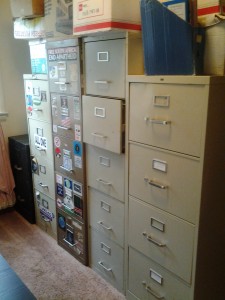 Yes, in the drawer tally I have an unfair advantage because we have a file room. I have drawers and drawers of my writings, and C.T. has saved statistics and other information on every Food Not Bombs feeding, activist event, theatrical production, and consensus workshop he held—I mean feeding head counts, menus, promotional fliers, etc., and date books going back to 1983. We’ve been moving his archives from house to house, planning to write his memoirs.
Yes, in the drawer tally I have an unfair advantage because we have a file room. I have drawers and drawers of my writings, and C.T. has saved statistics and other information on every Food Not Bombs feeding, activist event, theatrical production, and consensus workshop he held—I mean feeding head counts, menus, promotional fliers, etc., and date books going back to 1983. We’ve been moving his archives from house to house, planning to write his memoirs.
What did our burglar think, opening a file drawer to find dog costumes, or pulling out my middle desk drawer to find little gemstone dinosaurs? Well, I like to think that I’m unique, interesting, even thought provoking. But this burglar was probably not moved. Nothing in these actions was about me.
Our neighbors were a flurry with updates and advice in the hours after our break in. It turns out a house in the opposite cul  de sac was also broken into around the same time, and again, nothing taken. People theorized what the burglars might have been looking for—cash, illegal drugs, prescription drugs (oxy-anything), small electronics. Was it a gang initiation or training exercise?
de sac was also broken into around the same time, and again, nothing taken. People theorized what the burglars might have been looking for—cash, illegal drugs, prescription drugs (oxy-anything), small electronics. Was it a gang initiation or training exercise?
We will almost certainly never know. And as our friend Ross, who owns the house, was here fixing the broken front door, I marveled that I really was not very upset. Acknowledging that events could have gone very badly, up to and including death, this was a mild event, a warning to be careful.
 What struck me? Apart from reflecting that the event could have gone down in many different ways and those I care about might have been hurt (read: dog), I have fixated on the realization that, without the task of going from room to room closing drawers, I might never have noticed that there are sixty drawers in this house. What does it mean? It feels like just a poetic little factoid, maybe a message to scale down my possessions further, maybe a cute, meaningless parallel in the year that C.T. is turning sixty years old. Maybe I am just pondering myself, hurling through 2013 in this little house on spaceship Earth, clinging to all the drawerspace I can maintain.
What struck me? Apart from reflecting that the event could have gone down in many different ways and those I care about might have been hurt (read: dog), I have fixated on the realization that, without the task of going from room to room closing drawers, I might never have noticed that there are sixty drawers in this house. What does it mean? It feels like just a poetic little factoid, maybe a message to scale down my possessions further, maybe a cute, meaningless parallel in the year that C.T. is turning sixty years old. Maybe I am just pondering myself, hurling through 2013 in this little house on spaceship Earth, clinging to all the drawerspace I can maintain.
What am I storing? Clearly nothing a burglar wants.
